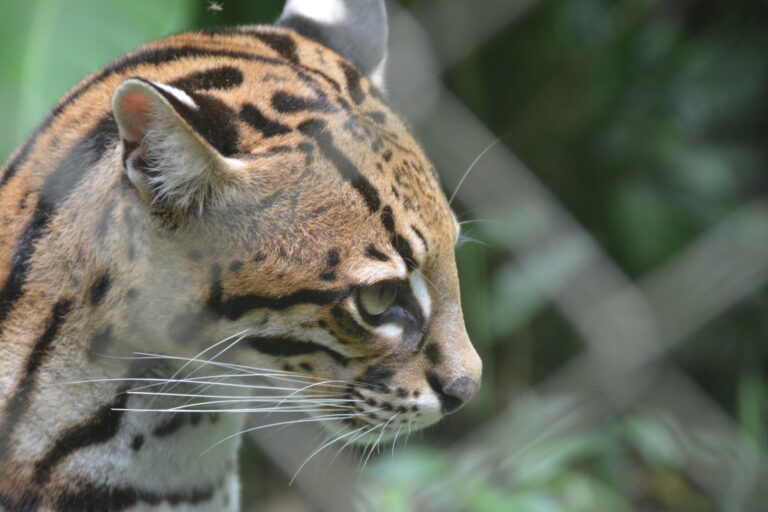Species in Peril:
OCELOTS

An agile and night prowler feline
Their range
From the southern United States to northern Argentina, the ocelot can be found up to 3,000 meters in elevation (9,800 ft). It’s only found in Texas and Arizona in the United States, and it’s gone extinct in Louisiana and Arkansas. Ocelot fossils have been discovered in Florida, notably at the Reddick Fossil Site. Tropical forests, thorn woods, mangrove swamps, and savannas are all home to this species.
According to a 2019 study in the Brazilian Amazon, it likes environments with plenty of prey and water and avoids other predators. Due to a shortage of prey, it prefers regions with extensive forest cover and water sources, away from roads and human habitation. It avoids steep slopes and extremely elevated areas. When ocelots cohabit with larger predators like cougars and humans, they may adjust their activity hours to avoid them and seek deep cover to avoid competitors.
It adapts well to its surroundings, therefore factors other than the aforementioned have no bearing on its habitat selection. The jaguar, jaguarundi, margay, oncilla, and cougar all share a substantial portion of their range.
The ocelot's diet
To catch prey, ocelots have been spotted following scent trails. They forage for prey at a modest pace of about 0.3 km/h (0.2 mph). Alternatively, an ocelot may wait for prey for 30 to 60 minutes at one location before moving on to another at a speed of 0.8–1.4 km/h (0.5–0.9 mph).
To avoid being spotted by the prey, an ocelot likes to hunt in regions with foliage cover, avoiding open areas, especially on moonlit nights. It eats tiny terrestrial mammals like mice, lagomorphs, armadillos, and opossums, as well as fish, insects, reptiles, and small birds, like a carnivore. It normally eats the kill right away, but not before removing the bird’s feathers.
It usually preys on animals weighing less than 1 kg (2.2 lb), however huge ungulates like deer and sheep, as well as peccaries, are infrequently targeted. Every day, an ocelot needs 600–800 g (21–28 oz) of food to meet its energy needs. Ocelots in southeastern Brazil and iguanas in a tropical deciduous forest in Mexico both eat primates. The diet of ocelots changes depending on the season; in Venezuela, ocelots prefer iguanas and rats during the dry season and land crabs during the wet season.
The threats they face
The ocelot is threatened by habitat loss and fragmentation throughout its range. In Texas, agribusiness is destroying the fertile terrain that supports deep cover and provides the best habitat for the ocelot. The habitat is often fragmented into small pockets that cannot support ocelots well, leading to deaths due to starvation.
Traffic accidents have emerged as a major threat over the years as ocelots try to expand beyond their natural habitat to new areas and get hit by vehicles. In the Atlantic Forest in northeastern Argentina, it is affected by logging and poaching of prey species.
The fur trade of the 20th century also greatly affected ocelots.
A Few More Facts About ocelots
- Only extant species in the genus Hyaena.
Striped hyenas are the national animal of Lebanon.
- Striped hyenas can raise their hair to make it look over 30 percent larger.
- They have great night vision allowing them to see in the dark.
- Although they look like dogs, they are actually more like cats.
They are considered to be very intelligent.
They don’t need to drink a lot of water and can go days without water if needed.
Species Name
Leopardus pardalis
Estimated Population
800,000 to 1.5 million
Conservation Status
Vulnerable
Range
Western North and South America
Reasons for Population Decline
Habitat loss
Poaching
Traffic accidents/human encroachment on habitat


